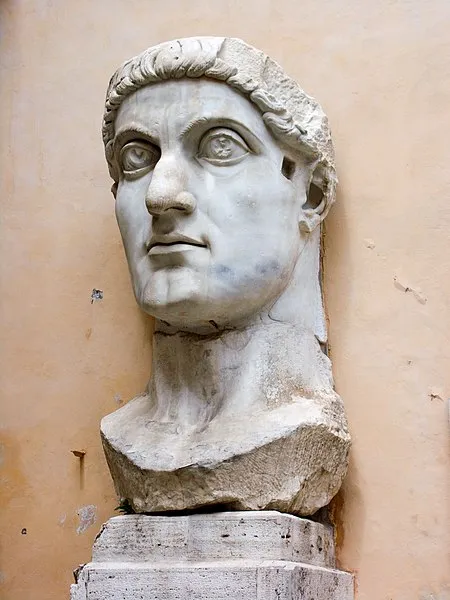Once again it is after 3:00 AM and am I not done with my post for the day. I wanted to write about Early Christianity, but i think I will write a short piece on the Early Roman Empire.
The Roman Empire created a large free trade zone. Many historians talk about a phenomena called the Pax Romana. This was a period when Rome had hegemony and people seemed to thrive. However, the Roman Empire failed to produce the wealth of ideas that came from Ancient Greece or the Roman Republic.
Perhaps I shouldn't put a post about the Roman Empire on Proof of Brain because the Empire was a hierarchical structure which did not encourage people to use their brains.
The purpose of this post is to recount a few key events.
The Roman Republic was an oligarchy. The Senators had long debates about matters of state; however, the Roman Republic was still a top down society.
Caesar was a populist. A populist gains popular appeal and gains power by uniting his inner circle with the people.
The Empire created a political structure that was even more centralized and prone to corruption than the Senate.
The well being of an empire depends largely on the effectiveness and mental health of the man at the top. Rome had many powerful Emperors such as Julius Caesar, Augustus Caesar, Titus, etc.
The empire had a few mentally unstable emperors such as Caligula (12 AD – 41 AD) and Nero (37 – 68 AD).
Emperor Marcus Aurelius Antoninus (121 – 180 AD) wrote an inspiring work on Stoic philosophy.
Like all other monarchies. The Roman Empire had a problem with succession. The death of an emperor would invariably lead to a power struggle and chaos.
Diocletian (244 – 311 AD) was a Roman General who was declared emperor by the army after defeating Numerian and Carinus.
Diocletian realized that the political needs of the Empire on the frontier was different from the needs in Rome. He attempted to solve the problems by splitting the empire into two. To solve the problem of succession, he created a structure called the Tetrarchy.
The Tetrarchy had two senior emperors called augusti and two junior emperors called caesares who would step in on the death of the senior emperor.
Ambitious leaders do not like the share power. The four heads of the Tetrarchy immediately began infighting.
Emperor Constantine (272 – 337 AD) rose to power in the Tetrarchy. His early career was dominated by infighting with the other members of the Tetrarchy.
Constantine claims to have seen a vision before the Battle of the Milvian Bridge against Maxentius on the 28th of October in 312 AD. After the battle, Constantine legalized Christianity.
Constantine established the City of Constantinople on the North shore of The Bosporus as the Eastern Capital of the Roman Empire in 330 AD.
Since the city was is an strategically important position, Constantine surrounded the city with huge fortifications. Constantinople stood until 1453 AD.
Constantinople was a Greek speaking city. The people probably referred to themselves as Romans.
The Western half of the Roman Empire collapsed under the weight of its own corruption. The Eastern half of the Roman Empire lasted until 1453 AD when the city fell to the Turks.
The Ancient Regime and Religion
The Roman Empire was a class society with the Emperor perched at the top of the pyramid supported by Patrician families who lorded over plebeians and slaves. People not in the structure were considered barbarians.
The empire used religion as a tool to control the masses. The emperor would demand that Roman Gods be included in the pantheon of polytheistic communities.
They had troubles with monotheism. Emperor Titus invaded Jerusalem in 70 AD. He destroyed the second temple and forced the people of Jerusalem into exile.
The most common view is that Christianity appeared as a resistance movement. The Romans brutally oppressed Christians until the rule of Constantine.
Constantine liked the ideals of Christianity. Constantine felt that emperors had to do unchristian things to rule the empire. For this reason he did not convert to Christianity until he was on his death bed.
I will write about Early Christianity tomorrow. For the picture I will drop an image of a bust of Constantine drawn from Wikipedia.

